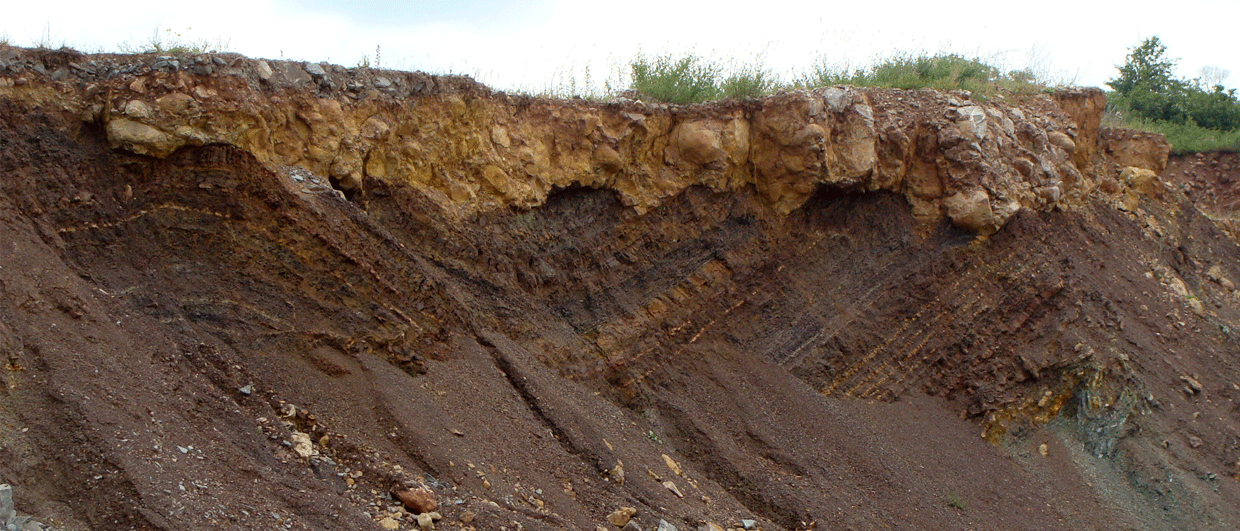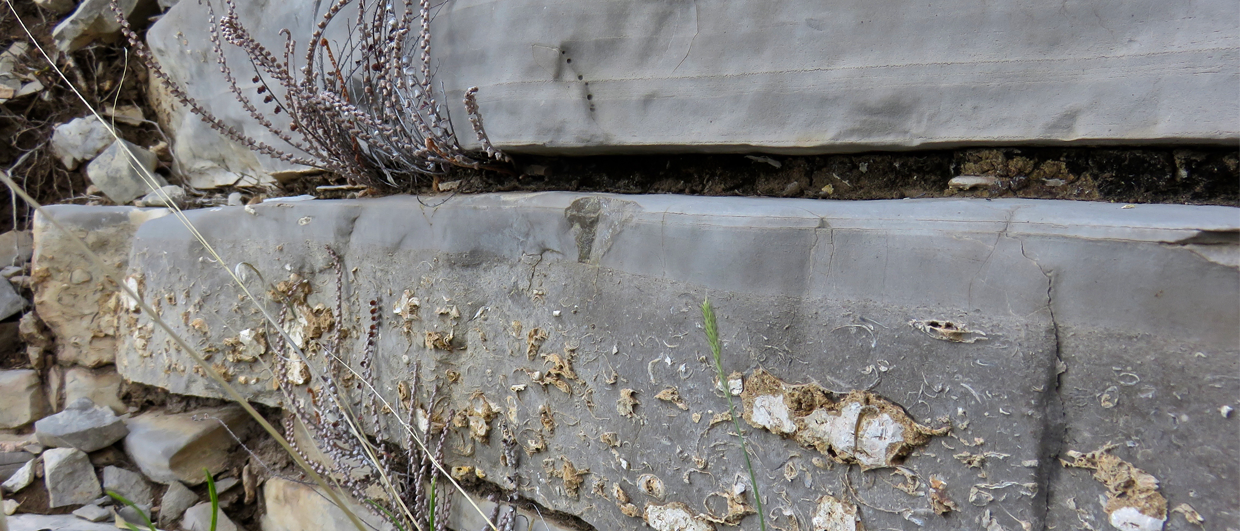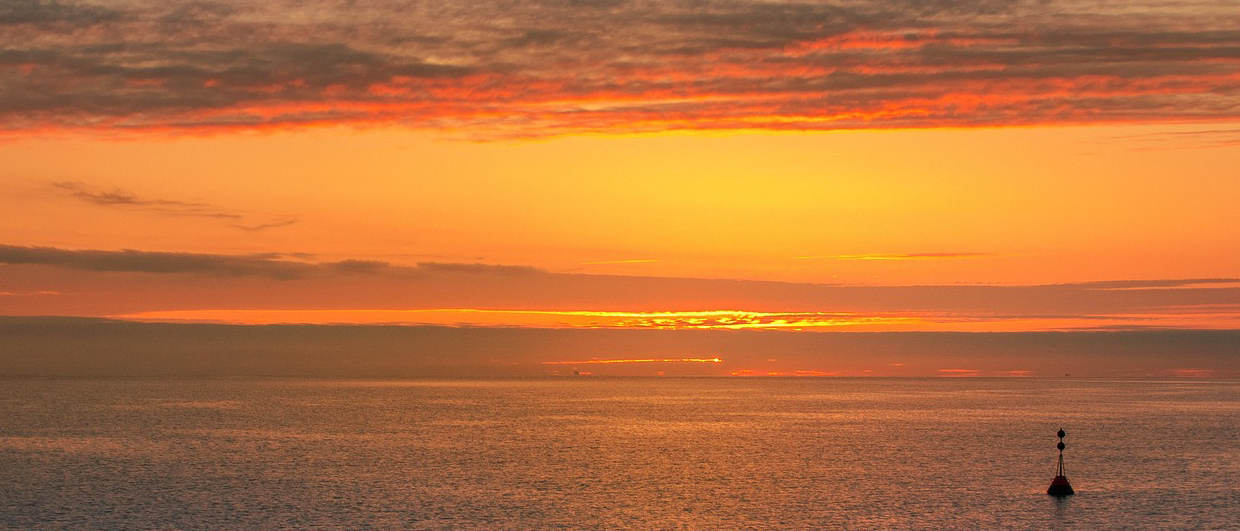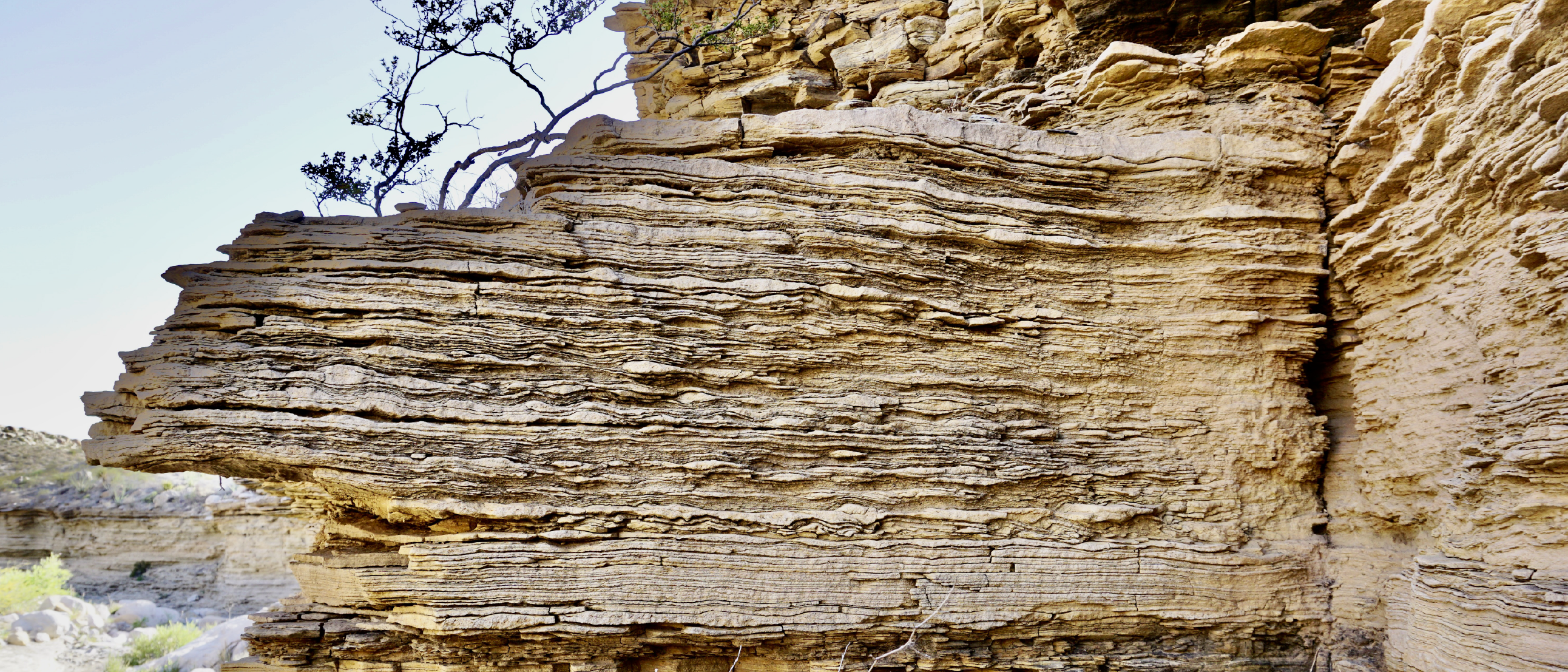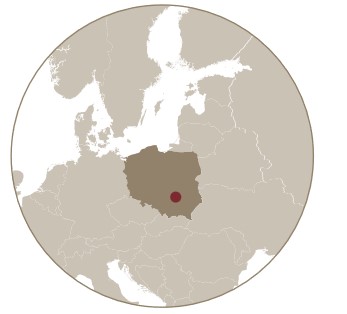 A spectacular erosive contact between Permian continental conglomerates and Lower Carboniferous marine strata can be observed at the Kowala Quarry in the Świętokrzyskie Mountains, Poland, situated in the southeastern part of the Southern Permian Basin. The Lower Permian (Rotliegend) facies are considered one of the most significant oil and gas reservoirs in central and western Poland.
A spectacular erosive contact between Permian continental conglomerates and Lower Carboniferous marine strata can be observed at the Kowala Quarry in the Świętokrzyskie Mountains, Poland, situated in the southeastern part of the Southern Permian Basin. The Lower Permian (Rotliegend) facies are considered one of the most significant oil and gas reservoirs in central and western Poland.
In the marginal parts of the basin, coarse-grained deposits, including conglomerates, are prevalent, as depicted in the photograph. These conglomerates were deposited in dry alluvial fan settings, although some represent infills of dry river valleys (wadis) similar to those currently observed in the Arabian Peninsula. During the Early Permian, the climatic conditions in this part of Pangea were arid and hot, interrupted by short phases of humidification, which were responsible for the evolution of short-lived but powerful rivers. The presented erosive contact is evidence of such an event.
Such conditions facilitated the development of extensive intervals of conglomerates and sandstones with high porosity and good permeability. Consequently, climatostratigraphic studies can play a crucial role in identifying high-quality oil and gas reservoirs in these deposits.

